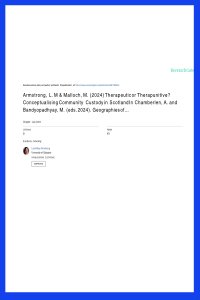By The Correctional Association of New York
The Humane Alternatives to Long-Term (HALT) Solitary Confinement Law (hereinafter “the HALT Law” or “the HALT Solitary Law”) passed on March 31, 2021, and went into effect on March 31, 2022, following years of grassroots organizing and advocacy. The Correctional Association of New York (CANY) – an organization that has been monitoring prison conditions since its founding in 1844 and is the only independent organization in New York State with authority to monitor state prisons and publicly report findings – has been monitoring implementation of the HALT Law in state prisons.1 The HALT Law is considered the most expansive and progressive legislative change in the United States concerning the practice of solitary confinement, known more generally as segregation. HALT dictates fundamental shifts in the duration and definition of segregation; perhaps even more significantly, the law prescribes a sea change in the philosophical underpinnings of behavior management in prisons. Implementation of the law has been met with harsh critique and resistance by some staff within the Department of Corrections and Community Supervision (DOCCS), who have linked the law to reported increases in violence in the prisons; various data outlined in this report raise questions about the connection between any increase in violence and the implementation of HALT. Other corrections staff acknowledge that the Department had relied too heavily on segregation in the past and embrace the opportunity to expand programming, even as they navigate the challenges. This report presents CANY’s findings and recommendations regarding implementation of the law in state prisons thus far, based on CANY’s prison monitoring activities in the time leading up to implementation and between April and December 2022. The findings presented here should be considered in that context: CANY has monitored the first eight months of implementation of a law that seeks to transform practices that have been in place for decades. In anticipation of the HALT Law taking effect, DOCCS ended the practice of keeplock (a form of segregation or solitary confinement) starting in late 2021. The HALT Law has also led to a reduction in the use of Special Housing Units (SHU), another form of segregation or solitary confinement, and a reduction in the amount of time people are kept in SHU. In addition, some incarcerated people who had spent years and decades in SHU have been moved to alternative units or to the general population. Moreover, DOCCS is operating alternative units, known under the law as Residential Rehabilitation Units (RRUs), that are providing opportunities for out-of-cell programming and engagement. DOCCS has also published a variety of administrative data and reports in compliance with the law, representing an increase in information-sharing, transparency, and accountability.
New York: CANY, 2023. 65p








